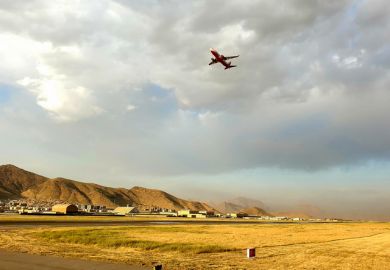Some 30 million people across the world are refugees. In the past 20 years the main producers of refugees have been developing countries, although they have been the main providers of shelter for them, too. These states have had to wrestle with the problems of settling large numbers, often within regions that are already under stress. In time, a proportion of those who leave their homeland during political upheavals will return. For some this will be an individual decision, while for others there will be a mass return after pressure from the states or agencies that have been providing their shelter. The process of repatriation and resettlement becomes an issue not just for the refugee but also for the state to which they are returning.
However, it is not only refugees who are involuntary migrants faced with the prospect of resettlement. Over the past decade, between 90 million and 100 million people in developing countries have been displaced by large-scale projects such as the building of dams and airports. International organisations including the World Bank have frequently been criticised for the negative impact on many of the population created by these infrastructure projects, which often form part of a package of assistance given to developing countries. As a consequence, more attention is now being given to the socioeconomic impact of resettlement in their policy statements.
To what extent can the settlement of refugees and the resettlement of internally displaced persons be seen as involving the same issues and problems? In Risks and Reconstruction , Michael Cernea and Christopher McDowell as co-editors bring together research on the experiences of refugees and of oustees (those displaced by state projects). Theirs is claimed to be the "first multidimensional comparative analysis of the two large groups of the world's displaced populations" and focuses on the means of "reconstruction of their livelihoods". The volume explores the condition of displacement, the risks of impoverishment and the rights of those uprooted with reference to the ideas of human rights, social justice and social inclusion.
The work featured in the book was sponsored by a range of international organisations and is brought together under the auspices of the World Bank and the Refugee Studies Programme at Oxford University. The volume is organised into two main sections, the first covering discussions of the key conceptual and policy issues and the second containing descriptions of projects and their findings that contribute practical examples of developments in the field. These projects, with their wide-ranging ethnographic material, are located across the developing world. The analyses of the projects emphasise their interconnection in relation to the key conceptual issues. Throughout the book the emphasis is on learning from successful experiences.
Cernea presents a theoretical model that he believes can not only explain what happens during massive forced displacements but can also be used to guide policy in resettlement. He calls this the "impoverishment risks and reconstruction" (IRR) model and challenges academics to use this as a bridge between the insular research domains of development studies and refugee studies.
The key to the IRR model is the dialectic between potential risk and actuality. The displacement risks that are identified within the model can then be used to identify the strategies to overcome the patterns of impoverishment and therefore lead to successful resettlement. Cernea sees these risks as also providing the framework for driving future research programmes. Risk analysis is not new within project methodology but it usually focuses on risks to rates of return to project investments. The IRR model, however, moves away from this financial bias and considers the risks to people. As Cernea argues, the cost-benefit analyses usually employed do not explore the distribution of either costs or benefits among project stakeholders and attempt to keep costs low by minimising compensation, exacerbating impoverishment of those displaced. Project analyses also fail to consult those who are to be displaced, thus failing to identify the significant factors for the impending oustees. His assumption is that the same broad risks affect refugees and therefore should be used in state strategies for their resettlement.
Eftihia Voutira and Barbara Harrell-Bond in their chapter challenge the level of transferability of the IRR model into the refugee resettlement situation. They argue that not only are the causes of impoverishment different but also the definitions of success. The major obstacle to a reciprocal transfer of knowledge from refugee and oustee settlement experience is seen as "not just conceptual, residing in one-sided research, it is institutional, originating in the practices of major agencies".
Voutira and Harrell-Bond analyse several successful large-scale refugee resettlements ranging from the post-first world war transfer of 1.5 million Greek refugees from Turkey to Greece to the Tibetan refugees settled in India with their own government under the Dalai Lama. They draw the conclusion that over the 20th century there has been a shift from a situation of refugees without the support of international policy to one in which there is now international policy but without the voice of the refugees. Within this internationalisation of refugee policy has been a move from ideas of permanent settlement in host countries to temporary settlement with an increasing emphasis on repatriation. Where repatriation is against the will of the refugees, then their involuntary resettlement begins to resemble the situation of the oustees. However, while being wary of "grand theory", they do believe that there should be a bridge between research on refugees and oustees and are disappointed by the lack of comparative studies to date.
Cernea and McDowell have successfully brought together an important area of theoretical debate with an underpinning of empirical research. It is of significance not only for those studying the separate academic domains of refugee studies and development studies but also for policy-makers and analysts. One hopes it will contribute to scholarly debate and to the amelioration of the conditions of involuntary resettlement faced by millions of people across the world.
Patricia Ellis is senior lecturer in refugee studies, University of East London.
Risks and Reconstruction: Experiences of Resettlers and Refugees
Editor - Michael M. Cernea and Christopher McDowell
ISBN - 0 8213 4444 7
Publisher - The World Bank
Price - -
Pages - 487
Register to continue
Why register?
- Registration is free and only takes a moment
- Once registered, you can read 3 articles a month
- Sign up for our newsletter
Subscribe
Or subscribe for unlimited access to:
- Unlimited access to news, views, insights & reviews
- Digital editions
- Digital access to THE’s university and college rankings analysis
Already registered or a current subscriber?



